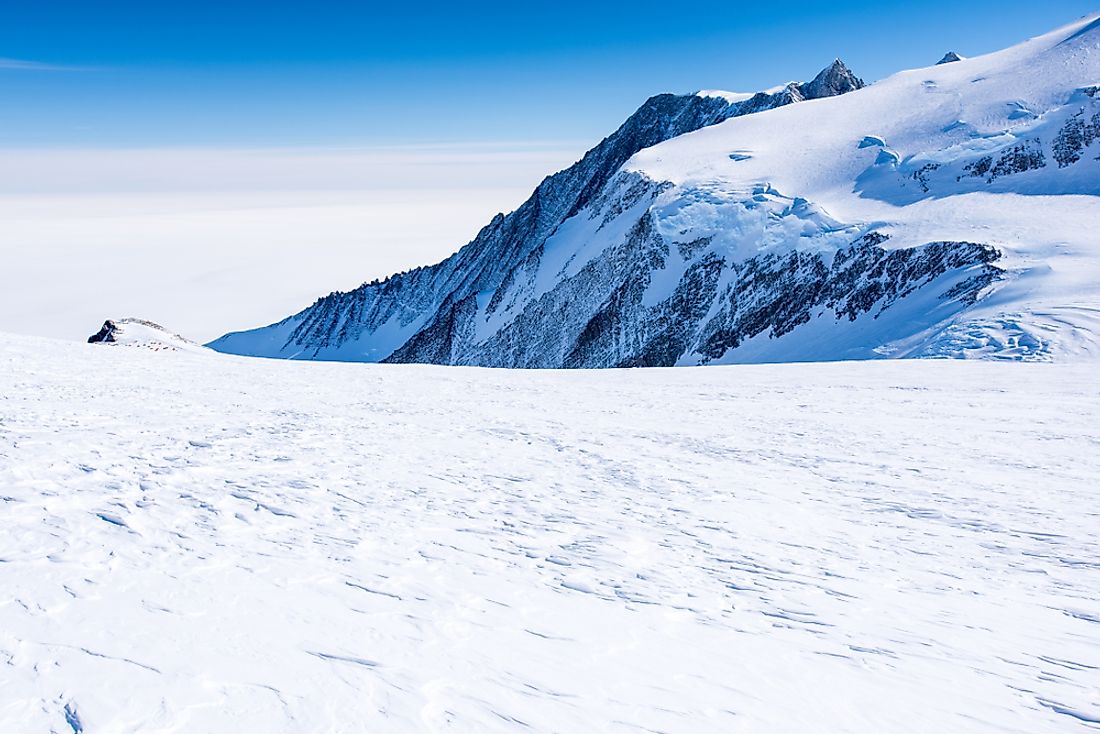What Is a Massif?

A massif is a section of the Earth’s crust that has been demarcated by faults. It also refers to a group of mountains that have been formed by such a structure. It is the large section of the Earth's crust that is more rigid than the surrounding rock, such that when force is applied it breaks away and moves as a single unit. The name Massif is derived from French, and roughly translates to "massive."
Formation of a Massif
The formation of a massif begins with the movement of tectonic plates beneath the ground, which is often caused by magma. The magma differentiates inside the spaces that they create under the rocks, forming a residual liquid with a density that is greater than the surrounding rocks. Eventually, this residual liquid migrates downwards and solidifies, expanding in the process. This expansion displaces adjacent rock beds, causing shifting in the plates. When these forces meet a hard rock that cannot bend, they force it upwards as a whole unit, pushing it to the surface, where it becomes a massif. A massif can also be formed when magma freezes when it reaches the surface.
Features of a Massif
Massifs are enormous in size, and some are even bigger than the traditional mountains. The largest massif is the Tamu Massif, which is located in the Pacific Ocean and it is about 14,000 feet tall. Tamu Massif is considered the largest volcano on the planet despite being underwater. The rocks that make up the massif have very high silica content, which is an element that is always present in related volcanic processes. Marbles, quartzite, gneiss, and amphibolite are commonly associated with massifs, and these rocks are formed when magma melts rocks and then cools.
Examples of Massifs
There are many massifs across the globe, both on the surface and in the sea. A famous example of a massif under the sea is Tamu Massif (mentioned above), which is located off the coast of Japan and is believed to have been formed more than 145 million years ago. Massif Central in France, which is made up of a series of mountain ranges, valleys, and plateaus, covers 15% of the country. The highest peak of these ranges is Puy de Sancy, which is 6,188 feet above sea level. Another example is Limestone Massif in Syria, which has a series of three mountains: Mount Kurd, Mount Simeon, and Harim Mountains. Another notable massif is the Atlantic Massif located in the North Atlantic Ocean. It is a dome-shaped structure on the sea floor that spreads out for approximately 10 miles and rises to 14,000 feet. The Vinson Massif in Antarctica stretches out to 13 miles and rises to about 16,000 feet above sea level. Africa also has a series of massifs that include Adrar de Ifoghas (Mali), Mulanje Massif (Malawi), Kilimanjaro Massif (along the border of Kenya and Tanzania), Oban Massif (Nigeria), and the Waterberg Biosphere (South Africa).











